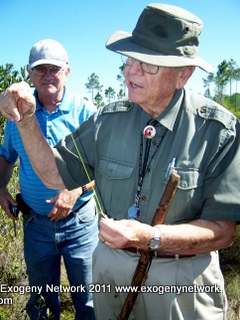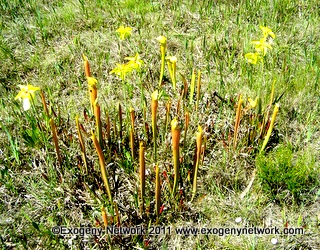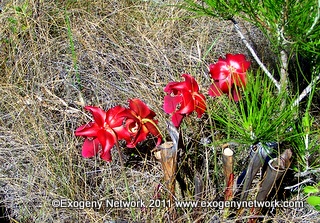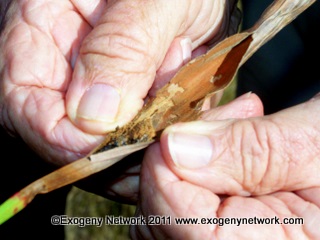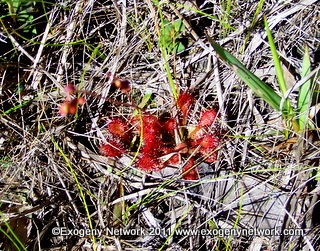Being prepared.
Sounds like a boy scout motto, doesn’t it? “Be Prepared”
Maybe in a sense, it is a good scout motto, because scouting was always about learning things, at least in the beginning. Knowledge IS power, right? Knowledge can also be freedom.
Sure, it’s great to be prepared and have that food set aside for that rainy day, whether it comes due to a hurricane, earthquake, job loss, injury, governmental meltdown, or whatever comes down the pike…or interstate…or river. But the food isn’t all there is to being prepared either.
It’s about being prepared to handle adversity and adapt to new problems and situations. That is usually easier for the younger crowd, because as we age, we find that change and adversity more threatening, especially when deprived of our “support group” of our family and friends. Even though its easy for me to forget it most days, I have to remind myself that I’m now officially joining the “older” group myself.
Being adaptable is something we can train for and practice in our daily lives. It’s called “new experiences.” Trying new things, learning new skills, getting out of our comfort zones…are all good practice. I’m quite used to car camping, I’ve done some backpacking, and now…I’m off on this idea of a Great American Adventure, if I can sell GM on the idea…of bicycling & camping across America. He says I’m nuts, that I can’t do that. I say endurance is irrelevant, that I would merely go until I was tired, and then sleep until I was rested. Whether or not I convince him to embark on this (possibly) over-ambitious project, I am pursuing the concept of bicycle camping. It intrigues me.
I’m also learning about the plants and animals of the estuaries along the Gulf Coast. It’s not been easy, as everything is unfamiliar to me, with my background in the deserts of the Southwest. It’s very interesting though, even if I am suspicious of water.
That’s another new thing for this year. I’m learning to explore the waterways in a small boat. I’m learning about fishing the coastal waters. It’s a far cry from the seasonal streams of the desert that I knew in my younger years too.
Learning, you see, is the key I hold in my hand for being prepared. I am prepared to adapt. I am a survivor. I can adapt and change when my circumstances change, no matter how they change. I survive.
The real key to surviving is just that. I will survive, I know how to learn, I have learned before, and I know a lot of things on which I can build my new knowledge base on.
I’ve baked that apple pie from scratch, and baked a cake over a campfire. I’ve build sheds and barns, fixed fences, and milked a cow. I’ve milked a goat too. I’ve made soap, I’ve skinned a coyote, I’ve hunted for rabbits, and I’ve fished. I’ve cooked what we’ve caught too. I’ve made quilts, and sewn clothes. I’ve grown gardens and canned and made jelly too. I’ve ridden horses, and harnessed dogs to carts. I’ve pitched a tent or two, and I’ve slept in the open too. I’ve made tarp shelters, snow shelters, and taken shelter beneath rocky overhangs. I’ve fixed leaking pipes, drawn water from a well with a bucket and rope, and drank from a stock tank. I’ve had fancy bathrooms, outhouses, and imaginary bushes. I’ve run off coyotes, feral dogs, and bobcats. I’ve herded cows, goats, sheep, chickens, ducks and geese too. I’ve even roped a few goats myself, as well as a horse or two. I’ve stacked hay, tended to sick livestock, and disposed of a few of their corpses. I’ve been homeless, and I’ve had lovely homes. I’ve been a mom, a sister, a daughter, a granddaughter, a niece, an aunt, and a grandma. I’ve been terrified, and I’ve been infuriated, and after the day was done, I had still survived.
I’ve collected a lot of t-shirts over the years, all in the name of trying new things. Some I liked, some I didn’t. Some were tough to walk away from. I’ve been deliriously happy, hopelessly sad, lost, found, scared, mad, glad, murderous, and loving. It didn’t kill me. I survived even when I didn’t think I could or even necessarily wanted to. Part of me is just too stubborn to give up, I guess. Maybe its luck. Whatever it is…I am a survivor.
Is it by choice or by accident or by fortune? I’m certain its mostly by choice. I’ve never been good at playing the victim, I’m much better at playing the competent role. I am competent, I can and do figure out how to solve problems, I cope. That’s my primary skill–coping, no matter what comes down that river towards me, I adapt and respond. If its cold, I find ways to get warm. If its hot, I seek cool. If its raining out, I figure out how to stay dry. If my car is broke down and I need to go somewhere, I figure out how to get there, whether its to ask someone to take me, use the bicycle, walk, or some other way…I get there.
Being prepared means knowing how to break the survival scenario into smaller problems and then attacking each problem with a solution. If its cold, raining, your hungry, and you are standing there…what will you work on first?
First, get some shelter to protect you from rain and wind. That will go a long ways towards warm too. Whether its a tent, lean to, brush shelter, under a bridge, or whatever…that shelter is critical.
Second, fire means heat, as well as a way to cook food and it also provides both light and security. For that, you need fuel and a way to start it burning. If you are lucky, you are somewhere with ample fuel. Look for fuel that may be dry, such as the interior of rotting logs, under logs or branches, etc. You will also need dry tinder and a way to start the fire, be it a match or striker.
Third, water can be heated in many things, including a paper bag. Hot water is a good start towards soup, an easy thing to make that renders many foods more edible and easier to eat. It also helps to stay hydrated, much more important initially than food is. Most areas have a variety of wild foods. If you don’t know them, learn them before you have to know what they are. It’s too late when you are standing there with a rumbling belly to learn.
Knowledge is power, and learning how to do these things and hoping to never have to use them is a very wise course of action. It doesn’t hurt to learn them, they don’t take up room, and they don’t tattoo you forever as a “weirdo”. No one will ever need to know you know these things…unless you choose to share that knowledge with them.
So how do you learn? You are on the internet, with a wealth of information in front of you. If you don’t have a teacher in person, there is still YouTube, Instructables, and blogs such as this. There are websites such as Exogeny Network with information too. There are search engines to help you find specific information and gear.
And, along the way, don’t forget…it’s also a very wise idea to have at least 90 days of food on hand in your home too. Just in case. Call it a well stocked pantry, your rainy day supply or your end of the world food…whatever name you want to give it. Choose some foods that are packaged for long term storage, to simplify that rotation of food required for grocery store supplies. Pay attention and remember…disasters come in many sizes, colors, and flavors.
Filed under: Biking, Boating, Camping, Cooking & food, Emergency Preparedness, Exogeny Network, Gear, Gia Scott, People, Shelter | Tagged: emergencies, emergency, evacuation, gulf coast, instruction, mentor, Networking, novices, outdoors, teacher, tent camping, websites | Leave a comment »



